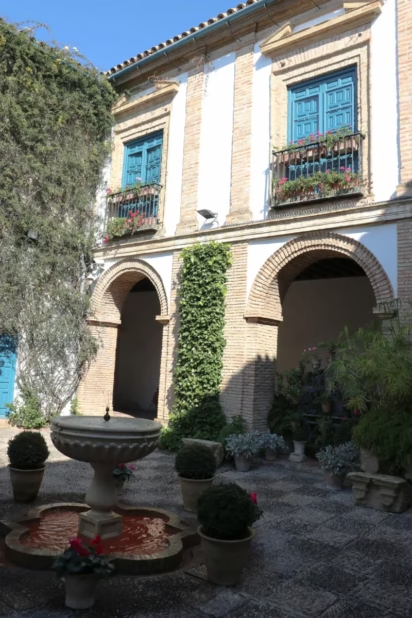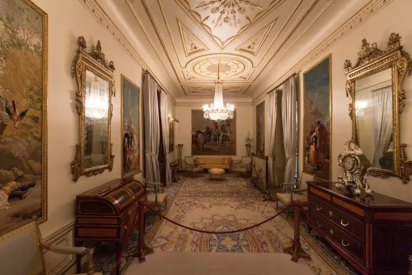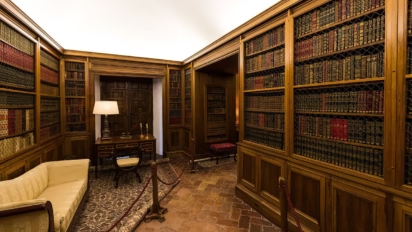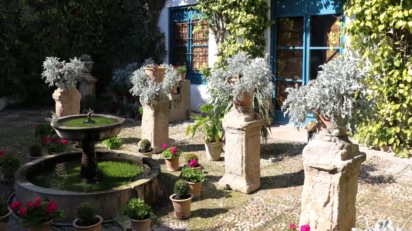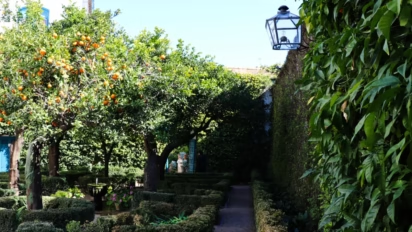The Palace of Viana in Córdoba is famous for its 12 courtyards (patios), art and artifacts collected over a period of five hundred years.

Córdoba in Andalucia is justifiably famous for its flower-filled courtyards and patios. Many are freely accessible to visitors, others may be appreciated through privacy gates while some charge visitors access at certain hours. Guided patio tours are popular with some of the finest examples in the old town near the Mezquita. However, it is worth trekking around half an hour north of the Mezquita to see the Palacio de Viana with its 12 courtyards and historic palace.
Palacio de Viana in Córdoba
The Viana Palace in Córdoba was originally the 15th-century home of the Marquis of Villaseca (and from 1875) the Marquis of Viana. Over a period of 500 years, this palace expanded and the art collection grew to reflect the tastes of each generation.
The palace was bought by the local provincial bank in 1980, shortly before the death of the childless 3rd Marquise of Viana, and opened to the public as a museum and cultural center.
The total area of the Palace of Viana complex is 6,500 sq m of which just over half is used for courtyards or gardens.
The 18 owners from the nobility who lived here since the 15th century extended the building and courtyards in an irregular fashion to give a good overview of the changes in tastes and fashion throughout the past five centuries. Little attempt was made to present the building in a unified decorated fashion.
Touring the Palacio de Viana in Córdoba
The Palacio de Viana is famous not only for its 12 courtyards but also for its magnificent collection of art and decorative arts including leather and embossed leatherwork, heraldic tiles, royal muskets, tapestries, paintings, porcelain, furniture of different styles, and archaeological pieces. It is an eclectic collection and rooms are often very full.
The interior may only be seen on a guided tour in Spanish. Booklets are available in other languages but tour members must stay with the group and may not explore rooms freely. (Photography is mostly not allowed inside.) The art collection includes works by Goya and Zurbaran but most items may probably be enjoyed without going into too much details about their origins.
The tour of the interior of the Viana Palace is roughly divided into three parts:
- The portrayal of power (and status) on the ground floor includes reception rooms with sumptuous interiors, mosaics and displays of wealth and the odd historic pieces of weaponry.
- The living palace includes sumptuous bedrooms and guess quarters with baroque and grand époque furniture and walls hung with tapestries. Visitors also see some of the service rooms needed to run such a household, as well as the private living quarters of the last marquise.
- The grand collection is probably the most impressive part of the palace. It includes the vast collection of art and furniture that were gathered in the palace through the centuries. Goya, Zurbaran and Brueghel are probably the best-known artists represented but some of the tapestries are by Wilhelm de Pannemaker. He famously accompanied Charles V on his War Against Tunis, to paint the war effort and create tapestries of which copies hang in the Real Alcazar in Seville. The Library is not only beautiful but contains over 7,000 volumes. The tiles collection (azulejos) has samples from the 13th to 19th centuries.
See the 12 Courtyards of the Palacio de Viana
The Palace of Viana is also famous for its dozen courtyards or patios. These individual courtyards are small — a quick view from the top of the bell tower of the Mezquita confirms that garden space comes at a premium in Córdoba. The courtyards are in no way comparable with the opulent gardens of the Alcazar but were very extravagant for a private town residence.
Visitors receive a handy map and may freely explore the courtyards to see the plants, art objects and architectural features. Most of the courtyards encircle the palace with a green belt but a few are positioned inside the palace itself. The courtyards are always green but in especially spring and early summer bathed in color too. The map highlights many of the plant species that grow in the respective courtyards.
The Courtyard of the Cats is certainly not the most beautiful but it claims to be the oldest documented neighborhood courtyard in Córdoba — it is inside a part of the palace that were rented out since medieval times.
The large Courtyard of the Columns has a timeless classical elegance. This is the only patio added after the palace became a museum and is used for functions. This classical courtyard is also the perfect sun catcher when not used for events.
It is easy to miss the Courtyard of the Archive, as it is the innermost patio and encircled by the palace. This fine example of Córdoban baroque provides space for quiet contemplation, although its main function is to add natural light to the palace archives that are housed on the upper floors surrounding the patio.
Palacio de Viana in Córdoba Visitors Information
The opening hours of the Palacio de Viana in Córdoba are:
- September to June: Tuesday to Saturday from 10:00 to 19:00, Sunday from 10:00 to 15:00.
- In July and August, opening hours are Tuesday to Sunday from 9:00 to 15:00.
Last admissions are around an hour before closing.
Admission tickets to the Palacio de Viana are €8 and include the patties and a compulsory guided tour (with English and other non-Spanish information sheets) of the interior, or €5 for seeing the 12 patios only (no tour).
Entry is free Wednesday from 14:00 to 17:00 – numbers are limited.
Admission tickets are available online for the courtyards only. The Palacio de Viana is also included in some patio walking tours of Córdoba.
The Palacio de Viana is at Plaza de don Gome, 2 14001 Córdoba. Weather depending, it is a pleasant 20-minute stroll to the north of the Mezquita. Bus C2 stops right in front while the public transportation hub around Plaza de Colon is only a few minutes’ stroll away.
The Medina Azahara archaeological site just outside the Cordoba is from the same period as the Mezquita and a very popular day-trip destination.
